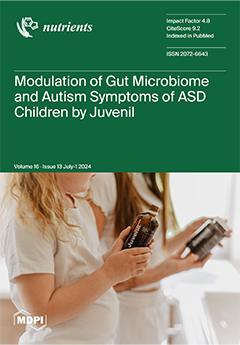Home » Publications » Page 2

Julia Jarosławska, Ranjini Ghosh Dastidar, Carsten Carlberg
In vivo vitamin D target genes interconnect key signaling pathways of innate immunity
PLoS ONE July 2024 19(7): e0306426
The vitamin D3 metabolite 1,25-dihydroxyvitamin D3 (1,25(OH)2D3), its nuclear receptor VDR (vitamin D receptor) and hundreds of their target genes are not only key regulators of calcium homeostasis, but also important modulators of the immune system. Innate immune cells like monocytes use VDR for efficient differentiation and are very responsive to vitamin D. So far, most information on the gene regulatory function of vitamin D and its physiological impact had been obtained from in vitro studies using supraphysiological doses of 1,25(OH)2D3. Therefore, medical experiments like the study VitDHiD (NCT03537027), where 25 healthy individuals were supplemented once with a vitamin D3 bolus (80,000 IU), provide important insight into the response to vitamin D under in vivo conditions. In this study, we inspected 452 in vivo vitamin D target genes from peripheral blood mononuclear cells (PBMCs) detected in VitDHiD and found 61 of them involved in eight major KEGG (Kyoto Encyclopedia of Genes and Genomes) pathways of innate immunity. Under in vivo conditions in healthy individuals vitamin D either silences five pathways of innate immunity, stabilizes two and increases one, so that acute inflammation is suppressed and the release of cytokines is kept under control. A ranking of the 61 target genes by inducibility, basal expression and multiple involvements in the pathways highlighted the genes NFKBIA (NFκB inhibitor alpha), NFKBIZ, FOSL2 (FOS like 2, AP1 transcription factor subunit), JDP2 (Jun dimerization protein 2), PIK3R1 (phosphoinositide-3-kinase regulatory subunit 1), CLEC7A (C-type lectin domain containing 7A), DUSP6 (dual specificity phosphatase 6), NCF2 (neutrophil cytosolic factor 2), PLCB1 (phospholipase C beta 1), PLCG2 and TNFAIP3 (TNF alpha induced protein 3). In conclusion, vitamin D’s in vivo effect on innate immunity in healthy adults is mediated by the interconnection of the pathways of neutrophil extracellular trap formation, Toll-like receptor, chemokine and phagosome signaling, NOD-like receptor, C-type lectin receptor, apoptosis and interleukin 17 through a limited set of proteins encoded by key target genes.
View full text

Eunike Velleuer, Carsten Carlberg
A Nutrigenomic View on the Premature-Aging Disease Fanconi Anemia
Nutrients 2024, 16(14), 2271
Fanconi anemia, a rare disorder with an incidence of 1 in 300,000, is caused by mutations in FANC genes, which affect the repair of DNA interstrand crosslinks. The disease is characterized by congenital malformations, bone marrow failure within the first decade of life, and recurrent squamous cell carcinomas of the oral cavity, esophagus, and anogenital regions starting around age 20. In this review, we propose that Fanconi anemia should be considered a premature-aging syndrome. Interestingly, the onset and severity of the life-limiting clinical features of Fanconi anemia can be influenced by lifestyle choices, such as a healthy diet and physical activity. These factors shape the epigenetic status of at-risk cell types and enhance the competence of the immune system through nutritional signaling. Fanconi anemia may serve as a model for understanding the aging process in the general population, addressing research gaps in its clinical presentation and suggesting prevention strategies. Additionally, we will discuss how the balance of genetic and environmental risk factors—affecting both cancer onset and the speed of aging—is interlinked with signal transduction by dietary molecules. The underlying nutrigenomic principles will offer guidance for healthy aging in individuals with Fanconi anemia as well as for the general population.
View full text

Shareefa A. AlGhamdi, Ranjini Ghosh Dastidar, Maciej Rybiński, Hadeil M. Alsufiani, Sawsan O. Khoja, Nusaibah N. Enaibsi, Safa F. Saif, Carsten Carlberg
Evaluation of the vitamin D response index in a Saudi cohort
Saudi Pharmaceutical Journal, Volume 32, Issue 8, August 2024, 102137
The concept of the vitamin D response index was developed based on vitamin D intervention studies conducted with Finnish cohorts. In this study, we challenged the concept by performing a single vitamin D3 bolus (80,000 IU) intervention with a cohort of 100 native Saudis. The change of serum levels of the proinflammatory cytokines interleukin 6, interleukin 8 and tumor necrosis factor measured directly before intervention in comparison to samples taken one and thirty days after vitamin D3 supplementation were used as biomarkers for distinguishing low, mid and high responders. Interestingly, we identified 39 % of the study participants as low responders. In contrast, when we used in a subset of 37 study participants whole blood expression changes of seven well-known vitamin D target genes one and thirty days after supplementation as alternative biomarkers, only 9 persons (24 %) were identified as low responders. In conclusion, in Saudi Arabia the rate of low vitamin D responders is equal or even higher than that in Finland. Therefore, similar to Nordic countries also in Saudi Arabia appropriate vitamin D3 supplementation is essential, in order to fulfill the needs of low responders.
View full text

Carsten Carlberg, Eunike Velleuer
Vitamin D and Aging: Central Role of Immunocompetence
Nutrients 2024, 16(3), 398
The pro-hormone vitamin D3 is an important modulator of both innate and adaptive immunity since its biologically active metabolite 1α,25-dihydroxyvitamin D3 (1,25(OH)2D3) regulates via the transcription factor VDR (vitamin D receptor) the epigenome and transcriptome of human immune cells and controls in this way the expression of hundreds of vitamin D target genes. Since the myeloid linage of hematopoiesis is epigenetically programmed by VDR in concert with the pioneer factors PU.1 (purine-rich box 1) and CEBPα (CCAAT/enhancer binding protein α), monocytes, macrophages, and dendritic cells are the most vitamin D-sensitive immune cell types. The central role of the immune system in various aging-related diseases suggests that immunocompetence describes not only the ability of an individual to resist pathogens and parasites but also to contest non-communicative diseases and the process of aging itself. In this review, we argue that the individual-specific responsiveness to vitamin D relates to a person’s immunocompetence via the epigenetic programming function of VDR and its ligand 1,25(OH)2D3 during hematopoiesis as well as in the periphery. This may provide a mechanism explaining how vitamin D protects against major common diseases and, in parallel, promotes healthy aging.
View full text







